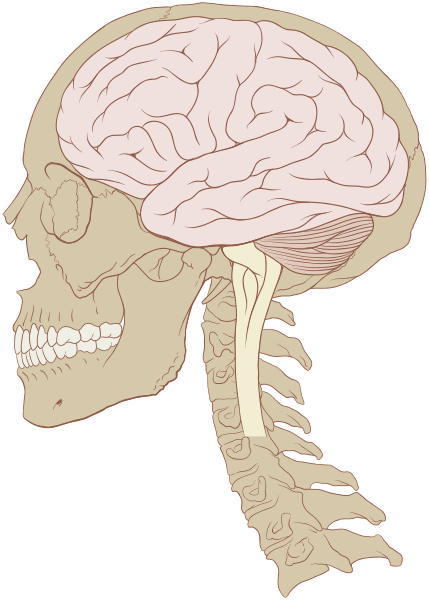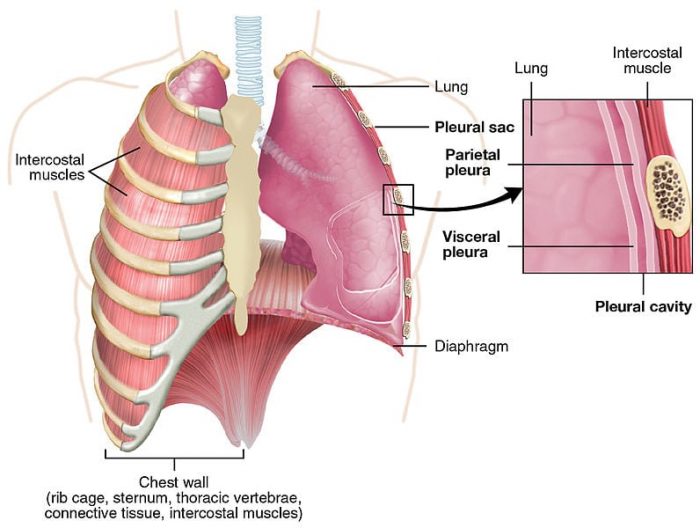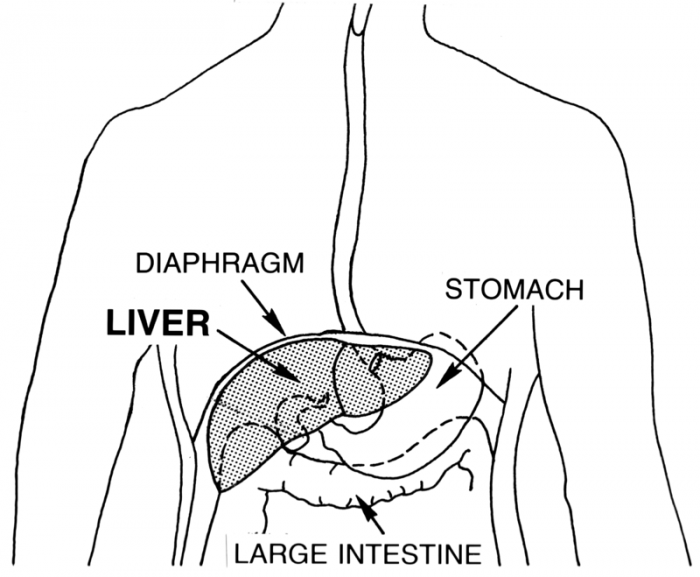
Your body organs range from your brain, heart, liver, skin, lungs, kidneys, intestines, stomach, bladder, etc. In all, there are believed to be 80 organs in your body, all serving different functions and uses.
Do you ever wonder what the major organs of the body are and where they are located? There are many organs in the body, more than seventy in total, so if we are to cover any ground in this article we’ll want to limit them just to the major organs. The major organs of the body include:
- brain
- lungs
- liver
- bladder
- kidneys
- stomach
- heart
- intestines
- muscles
- skin

Examples of organs: Eyes, kidneys, and muscles (images licensed under CC0 via Pixabay)
Concerning Body Organs
One important thing to keep in mind moving forward is that there isn’t a perfect definition of an organ. Organs are essentially groups of millions upon millions of cells that work together to carry out a specific function. As such, exactly what counts as an organ can change depending on who you talk to. The organs outlined below are agreed upon by most people as being their own distinct organs.

Photo: Patrick J. Lynch; illustrator; C. Carl Jaffe; MD; cardiologist
Yale University Center for Advanced Instructional Media
Medical Illustrations by Patrick Lynch, generated for multimedia teaching projects by the Yale University School of Medicine, Center for Advanced Instructional Media, 1987-2000.
Patrick J. Lynch, https://coastfieldguides.com/ Creative Commons Attribution 2.5 License 2006
The Brain
The brain is located inside the skull and it serves as the control center for the entire body. The brain is responsible for all our emotions and actions, as well as thought, sensation, speech, emotion, and memory. The brain is the center of the entire nervous system and it receives feedback from the other organs by various nerves that run throughout the entire body. The other organs of the body can basically just be thought of as support systems for the brain.

Photo: Anatomy & Physiology, Connexions Web site. https://openstax.org/books/anatomy-and-physiology/pages/1-introduction, Jun 19, 2013, OpenStax College, CC-BY-SA 3.0
The Lungs
The human lungs are a pair of organs which are found on both sides of the chest. The spongy tissue of the lungs fills with inhaled air thanks to a system of branches referred to as bronchi. The bronchi then divide further into smaller branches known as bronchioles. At the end of these bronchioles are sacs that hold the air called, alveoli. The air held by the alveoli is absorbed into the bloodstream where it goes to other cells in the body. Carbon dioxide is pulled out of deoxygenated blood and exhaled by the alveoli.
The Liver

Photo: By Pearson Scott Foresman – Archives of Pearson Scott Foresman, donated to the Wikimedia FoundationThis file has been extracted from another file: PSF L-540002.png, Public Domain, https://commons.wikimedia.org/w/index.php?curid=3583952, Public Domain
The liver is a fairly large organ which is found on the right side of the stomach. There are two halves to the liver, left and right lobes. Right under the liver are the gallbladder and the pancreas. The liver operates alongside the pancreas and gallbladder to absorb, digest, and process consumed food. The primary function of the liver is to filter the blood that arrives via the digestive tract and filter it before it goes to other parts of the body. The liver also handles the detoxification of harmful chemicals, the production of protein for blood clotting, and the secretion of bile.
The Bladder

Photo: By User:Lennert B – Own creation, using Adobe Photoshop 7.0, and Image:gray621.png as a source, CC BY 2.5, https://commons.wikimedia.org/w/index.php?curid=778398, CC-BY 2.5
The bladder is made out of muscular tissue and it’s located right above and slightly behind the pubic bone. The bladder is capable of stretching to accommodate liquid, but when the bladder is empty it is roughly the size of a pear. The bladder’s function is to hold urine, which means that humans can have more control over how often they urinate. A bladder can typically hold between 400-600 ml of urine, depending on the size. The muscles of the bladder squeeze to force urine out of the bladder, down a tube called the urethra, and out of the body.
The Kidneys
The kidneys come in a pair, much like the lungs. The kidneys are shaped like beans and are found right below the rib cage on both sides of the body. The kidneys are responsible for cleaning the body and removing waste products from it, as well as regulating blood pressure. They help maintain the correct levels of important chemicals like sodium and potassium and also create a hormone that drives the production of red blood cells.

Photo: By Indolences created it on the English Wikipedia.This SVG image was created by Medium69. Cette image SVG a été créée par Medium69.Please credit this : William Crochot – US PD picture., Public Domain, https://commons.wikimedia.org/w/index.php?curid=1521879, Public Domain
The Stomach
Like the bladder, the stomach is another muscular organ. The stomach is found on the left side of the body in the upper abdomen region. The stomach’s job is to receive food coming from the esophagus and digest it. A muscular valve controls the emergence of food from the esophagus into the stomach. The stomach secretes digestive enzymes and acids that dissolve food, and the muscles of the stomach will periodically contract. This contraction is done to churn food and assist the digestive enzymes in breaking down food. A small structure called the pyloric sphincter is responsible for controlling the movement of food from the stomach into the small intestine.
The Intestines
The intestines are found between the stomach and the anus, and their job is to transport digested food between those two areas. The intestines are typically divided into two sections: the large intestine and the small intestine. The small intestine absorbs most of the food people ingest, while what cannot be absorbed (like water) passes into the large intestine. There large intestine’s job is to absorb the water that passed through the small intestine and to transport solid waste to the anus for disposal.

Photo: By ZooFari – Own work Supporting references↑ [1] (cache)↑ [2] (cache), CC BY-SA 3.0, https://commons.wikimedia.org/w/index.php?curid=9841860
The Heart
The human heart is found just to the left of the breastbone and is about the size of a fist. The heart is responsible for pumping blood throughout the body using a complex system of veins and arteries. The heart has four different chambers in it: the right atrium, the left atrium, the right ventricle, and the left ventricle. The right atrium’s job is to receive the blood that arrives from the veins and direct it to the right ventricle, which then takes this blood and sends it to the lungs where it is filled with oxygen. The left atrium then receives the freshly oxygenated blood and moves it to the left ventricle where the blood is pumped out to the other areas of the body.
The Skin

Photo: US Government, Public Domain
The skin is the body’s largest organ, consisting of approximately 20 square feet of skin in the average person. The primary function of the skin is to regulate body temperature, let us touch things, and protect the body from potentially dangerous microbes and elements. There are three main layers of the skin: the epidermis the dermis and the hypodermis.
The epidermis is the skin’s outermost layer and functions as a waterproof barrier. The dermis is where the hair follicles, sweat glands, and connective tissue are found. The subcutaneous tissue or hypodermis is made of connective tissue and fat.









